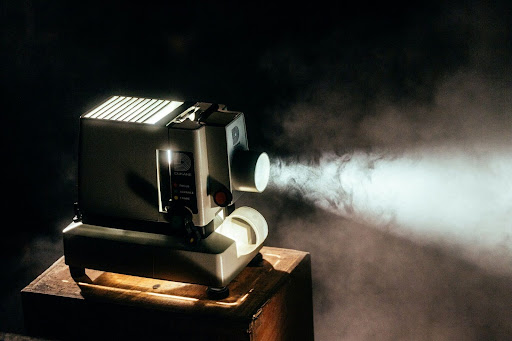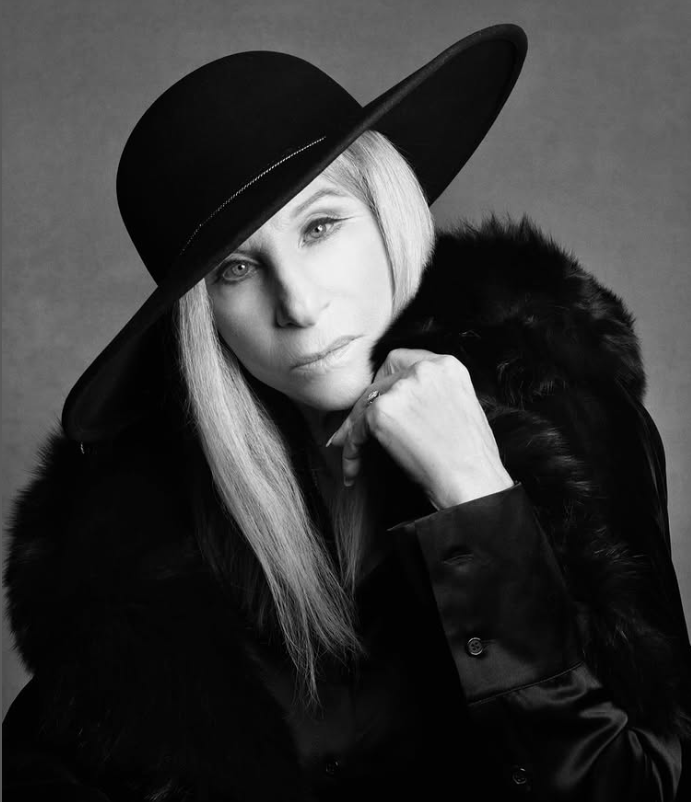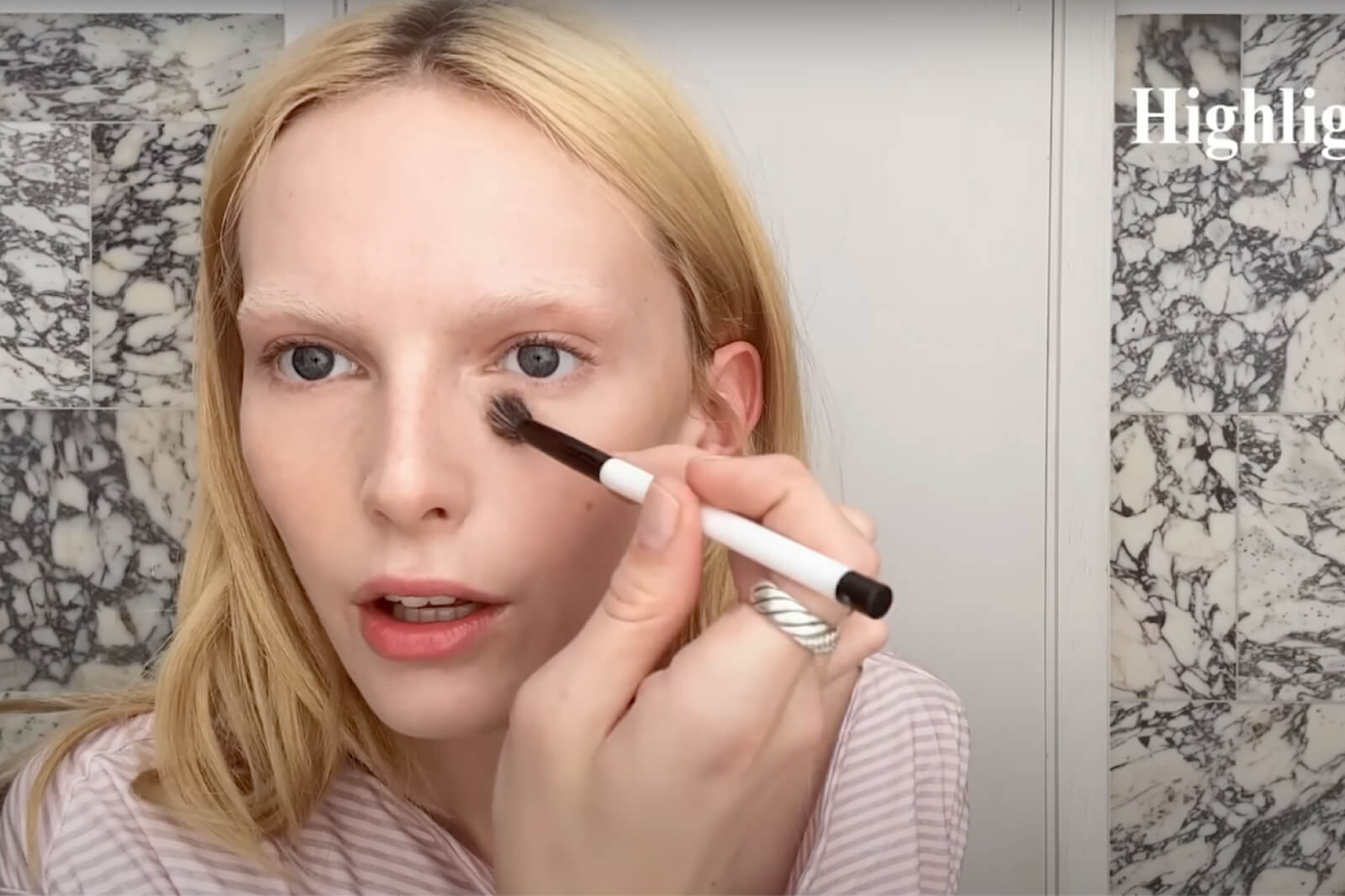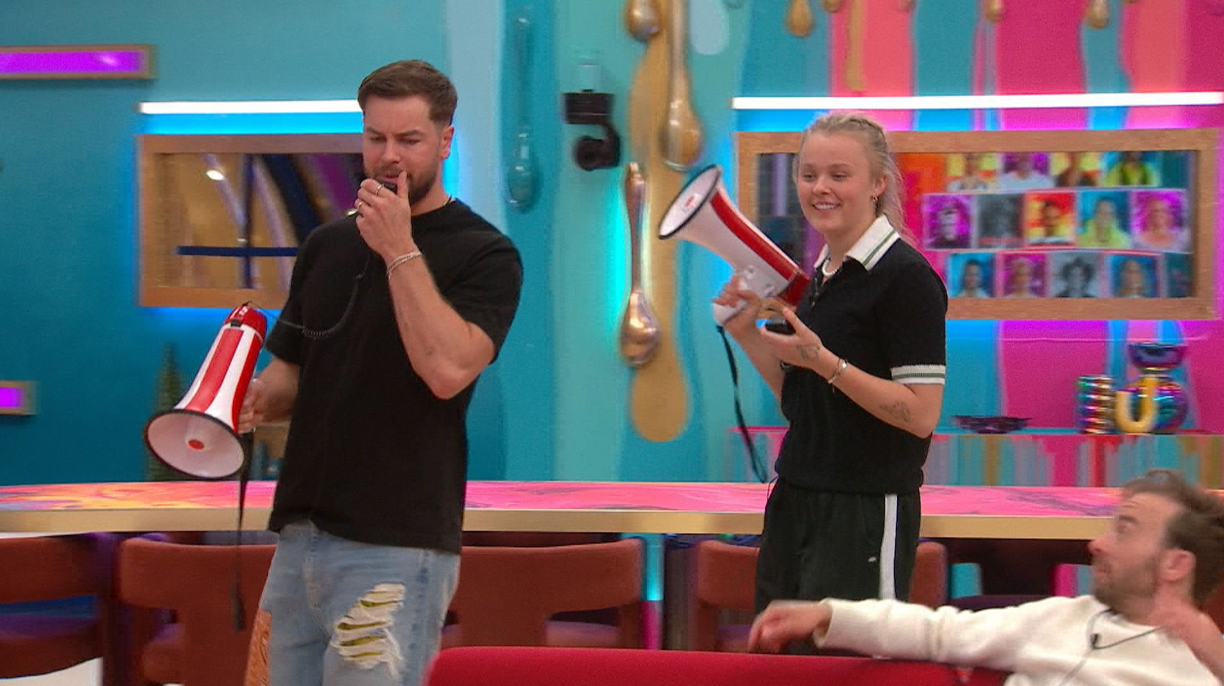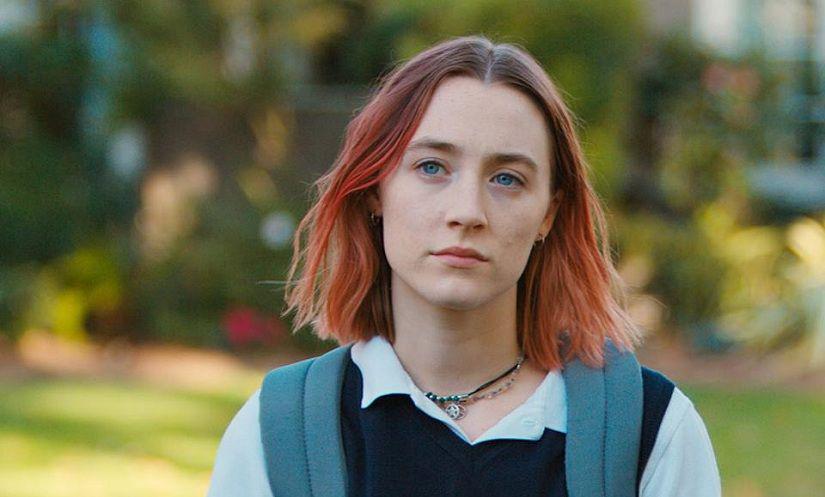
Like most NYU students, Christine from Lady Bird needed therapy
It’s a tale as old as time: the search for catharsis.
And since movies are the form of storytelling most apt for mindless escapism, film tropes have emerged to give us the satisfying feeling of catharsis through well-worn story structure and character formulations.
Every genre of film has seen iterations of the cathartic “hero’s journey”: violent blockbusters, fantasy epics, even charming indies. When executed well, you have a great film. But even a subpar movie can give that feeling of release if it follows some of the tried and true story elements — hence the endless Fast & Furious, Mission Impossible, James Bond sequels, and the like.
Most often, the exchange between tension and catharsis is played up every summer for major box office films. The majority of these star mysterious, jaded protagonists who are looking for catharsis through revenge or triumph. What draws us to these characters is often their rugged determination and their single-minded focus. These protagonists (mostly men) are often successful in their pursuits … but at what cost?
As we become more and more aware of the toxic messaging of culture and media, and more and more knowledgeable about mental health, some of the classic hero tropes are beginning to lose their aspirational luster. The proliferation of characters who are textbook definitions of toxic masculinity or male fantasies of “damaged” women no longer has the hold on us that it once had.
As filmmaking becomes more complex, different and diverse stories are making their way to the forefront, moving even mainstream movies away from contrived formulas and one-dimensional protagonists. And with increased access to and conversation about mental health, characters are getting more self-aware and films are increasingly exploring characters on journeys to catharsis through self-knowledge and therapy.
As we acclimate to a new era and move away from the overly familiar angst and aggressions of tropic protagonists, rewatching iconic films often begs the question: What if this character had just … gone to therapy?
Bruce Wayne in “Batman”
Pretty much every popular superhero should be in therapy. Most of their origin stories depend on some unresolved trauma that they work through by saving everybody else. Peter Parker feeling responsible for Uncle Ben’s death? Therapy. Orphaned alien Clark Kent? Therapy. Bruce Wayne watching his parents die and inheriting billions of dollars as a kid? Therapy.
And because Bruce Wayne’s origin story doesn’t depend on any mutations or supernatural ability, his entire superhero persona is built out of a childhood fear of bats (more therapy) and money he could have used to fund community programs to reduce crime — someone should have given him a book on abolitionist theory, too — instead of engineering technology to fight it himself.
The Christian Bale iteration of Batman (because we don’t talk about George Clooney’s nipple-heavy Batman suit, nor Ben Affleck’s Zack Snyder version) sees the young Bruce Wayne searching for meaning and purpose in the wake of his parent’s death. But instead of going on a stoic sojourn to learn hand-to-hand combat, he should have just talked to someone.
That being said, we will watch Robert Pattinson’s upcoming portrayal of Batman, just to see how unhinged it is.
Harry Potter
it will never not shake me that harry potter couldu2019ve been the messi of quidditch but decided to be a cop instead— Vince Diesel (@Vince Diesel) 1614135796
The fantasy genre is also ridden with orphaned children who turn their trauma into the pursuit for justice. The most popular example has to be Harry Potter. After a life of torment and mistreatment by his uncle and aunt, Harry gets to live out the fantasy of any neglected child: escape.
And somehow, going off to Hogwarts and coming into his parents’ money seemed to solve everything for Harry — though who is going to talk about the fact that he squandered his obscene wealth on novelty candy, quidditch gear, and butterbeer while his best friend lived in poverty?
Sure, he endured years of abuse at home and watched some of his friends die in the war against the dark arts (RIP Cedric Diggory, Robert Pattinson’s most iconic role), but everything turned out fine.
In reality, Harry’s internal struggles about his parents, his childhood, and even his more Slytherin side could have been a lot less emotionally taxing if he had gone to therapy. And maybe he wouldn’t have ended up becoming the magic world’s equivalent of a cop, either.
The Narrator in “Fight Club”
The narrator in Fight Club is famously suffering from insomnia and probably anxiety from his dissatisfaction with his life — so much so that he lives in a disembodied state and creates an imagined version of himself. And though he seeks out sleeping medication and support groups, his unexamined life is the cause of his extreme dissociation.
Though he blames the monotomy of consumerist society (and he does makes some points, hence the cultish following the book and film have both garnered), looking for meaning through physical violence and hyper masculine aggression is not the answer — which was, in fairness, Chuck Palahniuk’s point.
And while the narrator has a revelation about his mental state at the end, he never truly comes to terms with the deep-seated emotional unrest that started him on his downward path. He’s a prime candidate for therapy, and so is every member of the fight club, as well as anyone in real life who tells you it’s their favorite book and film for any reason other than Brad Pitt circa 1999. That’s a cry for help.
Cliff Booth in “Once Upon a Time In … Hollywood”
Speaking of Brad Pitt, he was undoubtedly the highlight of Quentin Tarantino’s 2019 Once Upon a Time in … Hollywood. The film, a love letter to Hollywood and the ’70s, starred Leonardo DiCaprio and Brad Pitt as an actor-stunt double duo, a combination which made for a glorious press tour and an even more glorious award season filled with Brad Pitt acceptance speeches that felt like a Mr. Congeniality tour, and we were here for it.
But, like any Tarantino production, Once Upon a Time in … Hollywood was deeply flawed. The classic Tarantino revenge fantasy played out a version of the ’70s in which the Manson murder of Sharon Tate never happened becuase it was stopped in its tracks by Leo and Brad’s characters. But despite the retributive ending, Brad’s character, Cliff Booth, had a lot to answer for.
The repressed violence which he unleashed on the would-be murderers is moralized by his righteous victory but is more sinister than the resolution makes it seem. A key, but under discussed character point is that Booth was rumored to have killed his wife for being … annoying? There is also a scene in which he attacks a fictionalized, highly stereotyped version of Bruce Lee while on set … also for being annoying.
And while all is well that ends well for Cliff Booth, we could have done without the problematic violence that was one of the baselines of his character. Or, at the very least, he could have done with some therapy.
Barry Egan in “Punch Drunk Love”
Adam Sandler might be known for his goofy slapstick comedy, but his most celebrated roles are those in which he plays neurotic, anxious characters who get themselves into more trouble than they need to.
Most recently, 2019’s Uncut Gems sees Sandler as a self-sabotaging jewelry merchant who comes into some luck and quickly loses it. But the precursor to this role is his role in Paul Thomas Anderson’s Punk Drunk Love. Sandler plays Barry Egan, an anxious, shy man who is prone to the occasional violent outburst.
The movie follows Barry as he tries to pursue love while the pressure mounts from all sides — his overbearing family, his job, an extortionist, his own internal monologue. Egan’s actions push him further and further into a spiral which could have been alleviated had he just gone to therapy, from finding the confidence to pursue his love interest to dealing with the pressures of his work and his family to addressing his violent bursts and self-criticism.
The Entirety of “The Breakfast Club”
Nothing has come close to capturing the suburban teen mood as well as the cultish charms of John Hughes films in the 80s. And while time has illuminated the way in which they were problematic and exclusive, they still have an appeal to even teenagers now.
What has kept them transcendent is their focus on teen anxieties, which make young people feel, in some ways, understood. The Breakfast Club is undoubtedly John Hughes’s magnum opus for its timelessness. In a way, the characters act out a version of a support group and group therapy, finding catharsis through sitting on the library floor, talking out their feelings and writing a manifesto for the ages.
It’s comforting, especially when you watch and marvel at The Breakfast Club for the first time as a trembling ball of teenage need, to think that you can confess all your secrets to a group of friends and suddenly be healed. Unfortunately, this is not the case.
Though they practice some of the pillars of therapy, talking about their lives, thoughts, feelings, and upbringings, each of the characters is a prime candidate for actual therapy, more than a moment of tenderness with a group of strangers can provide.
Jamie Rellis in “Friends with Benefits”
It’s not just men that are thrust into tropes that think “complexity” is interchangeable with “emotionally stunted, repressed, and in desperate need of professional guidance.” However, women are usually portrayed this way by men who don’t give them the same agency as their male counterparts. Instead of the rescuer, they’re the rescued. Instead of powerful and calculating, they’re seen as heartless and unlovable — until they can finally open up again for the right man.
A lot of the time, this is the formula for romantic comedies in which stressed out, career-obsessed women need only one thing to solve their problems: a man. Even in self-aware romantic comedies which try to subvert the genre fall into the same trap. In Friends with Benefits, Mila Kunis plays Jamie Rellis, a fast-talking, brusk New Yorker who wants love but settles for an entanglement with J*stin T*mberlake’s character, Dylan.
Jamie is supposed to be “not like other girls” because she’s “realistic” about love, despite being a romantic at heart … which scares potential partners away. But her backstory, which is dropped into the film during conversation to establish her character without doing any of the work, reveals that she still hasn’t processed her childhood trauma — an absent father, an unreliable mother, an unstable living situation.
But all of these details are just fodder for her quirkiness, and despite the ways they come up in her life and continually leave her disappointed, they are never addressed beyond her search for romance. Like most romantic comedies, what eventually completes Jamie is, you guessed it, love and grand gestures.
The romantic-comedy industrial complex has primed so many of us to think of relationships as the solutions to our problems, and that the “right person” will either accept us as we are or fix us. But bringing trauma into relationships will never end well, no matter what the end of Friends with Benefits tells you.
Every Manic Pixie Dream Girl Ever
Perhaps the most ubiquitous therapy-ready trope that women are thrust into in films is the manic pixie dream girl who is defined as a woman who “exists solely in the fevered imaginations of sensitive writer-directors to teach broodingly soulful young men to embrace life and its infinite mysteries and adventures.”
The term was coined in reference to Kirsten Dunst’s character in Elizabethtown and is pretty much everywhere. Often, what makes these characters so quirky and full of disdain for the conventions of life is their own trauma. These women, all alone in their white girl pain (a phrase used by Safy-Hallan Farah), are defined by their own vague sadnesses, which never get the chance to be addressed because they’re not the focus of the movie.
So take all the MPDGs to therapy, give them their lives back, and free them from the clutches of these boring white men — who all need therapy, too.
Amy Dunne in “Gone Girl”
In an attempt to give back female characters’ agency and subvert many of the tired tropes of women, Gillian Flynn wrote Gone Girl to give women a good villain. In a 2006 essay, Flynn wrote: “I’ve grown quite weary of the spunky heroines, brave rape victims, soul-searching fashionistas that stock so many books … I particularly mourn the lack of female villains — good, potent female villains.”
With this in mind, Gone Girl, both the book and its film adaptation, gives us Amy Dunne, who fakes her own murder and watches her husband take the blame, only to end up forced back with him when her plan backfires. The saga is no doubt entertaining, and though it has been interpretated as feminist by some and mysoginistic by others, what can not be doubted is that Amy Dunne was in need of therapy.
The seemingly perfect wife claims in the infamous “cool girl monologue” that she, as women everywhere do, tailored herself into a version of the woman her husband wanted. The cool girl trope has been endlessly used — and some say it has evolved into a version of “cool girls” on social media who exist not to satisfy the male gaze but for social validation from other “cool girls” — but if anyone is out here changing their whole personality for external approval, this is your sign to attend therapy.
And if anyone is planning to frame their husband for their murder because they found out he is cheating, also time for therapy.
Lady Bird in “Lady Bird”
An instant cult classic, 2017’s Lady Bird is the journey of a ’90s era high school senior trying to escape the suburbs and her life on “the wrong side of the tracks.” She tries her hand at escape tactics of the imagination: reinvention through her new name, theatre, relationships, and straight out lies about her life.
But Lady Bird (nee Christine) cannot actually escape her home, her circumstances, or her tumultuous relationship with her mother. The Greta Gerwig picture is tender, emotional, and artfully complex, painting a complicated picture of a complicated life. It seems for a moment that Christine won’t get the escape she wants, and she will reckon with her life in some other way, but at the last minute, she is whisked away by an acceptance to NYU and goes off to the big city.
Promptly, she becomes that kid who gets rushed off to the hospital with alcohol poisoning at her first college party. After that experience, she has an epiphany and sends a letter to her mother which hints at reconciliation. But Christine is still reconciling with so much, and her penchant for drama and avoidance of her real life really ought to be addressed beyond her nostalgia.
Lady Bird is part of the zeitgeist of women-led stories which are unflinchingly intimate with flawed, lovable characters. But some of them could be spared a world of trouble by attending therapy. Here’s to hoping.

